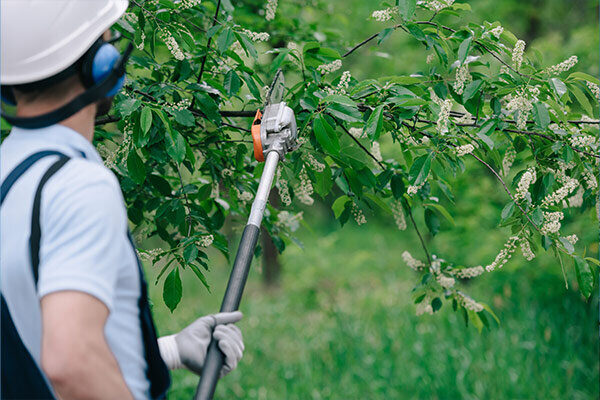What You Need to Know About Corrective Pruning
Many people think that they do not need to prune their trees as long as they “look” okay to their eyes. This means that they aren’t dead or dying, growing into a structure or power lines, or aren’t visibly in distress. However, that isn’t always the case. Sometimes, corrective pruning is needed. This may not impact the look of the trees, but it can.
Another thing to realize is that you may not be able to spot the signs of a dead or dying branch. It may look perfectly healthy to you, but in reality, it is slowly killing the rest of your tree and maybe other plants around it. It may be a good idea, therefore, to hire tree care experts who can inspect your trees to see if there is a need for corrective pruning or not.
Here are some reasons to consider corrective pruning:
It Can Ensure A Good Showing For Ornamental Trees
- Cutting back old areas can lead to a more even bloom
- Trees can get stressed if there are too many blooms
- Heavy weights from too many blooms can pose a problem
If you have ornamental trees that are getting older, it may be time for some corrective pruning to get those blooms you want to see. As trees age, the branches that are older may not bloom, leading to patchy trees that just aren’t as beautiful as you want them to be. By utilizing corrective pruning, those areas can be snipped away so that the tree’s resources go to the areas where blooms will appear.
Another reason people get corrective pruning for certain trees is because it can help to eliminate some of the weight that is put on these trees, according to The University of Georgia. This is particularly helpful if there is an early spring bloom and then the weather turns cold again – too many flowers covered in ice, for example, can bring down a branch.
If your ornamental trees are crooked, look heavy, or just aren’t blooming evenly, it may be time to look into corrective pruning.
It Removes Dead or Dying Branches That Can Be Eyesores
- Helps the tree to be healthier
- Enables even growth
- Can bring a tree back from the brink of death
Of course, no one wants to see a dead branch sticking out of a tree. It can be unsightly, ruins landscaping lines, and just looks untidy in your yard. Dead branches are also invitations for infestations and diseases that can destroy the rest of your tree. However, it isn’t always a sign that your tree is dying – branches die for any number of reasons. Corrective pruning can eliminate those branches and help your tree to stay healthy if it is already there.
Branches don’t always show you that they are dying in ways you will notice. It could be that the bark just looks slightly different, there are mushrooms growing on it, or some weird fungus that doesn’t look deadly. This is why it is best to have a professional look at your trees to spot any issues.
While it can make your tree healthier, Trees Are Good does warn that, “In most cases, mature trees are pruned as corrective or preventive measures, as routine thinning does not necessarily improve the health of a tree.”
The Tools Matter – They Can Hurt Or They Can Help
- Tools need to be cleaned properly
- Using the wrong tool can spread the problem
- User error in tree care is extremely high
Take care when attempting corrective pruning yourself. Too often, homeowners will use old tools that haven’t been cleaned and maintained, or that shouldn’t be used for the job. Every tree care tool has a certain responsibility, and few people own all of the tools needed for even the most basic of corrective prunes.
If you use the right tools but haven’t cleaned them properly, you can either transfer diseases that lead to the need for pruning or you can spread diseases that weren’t there to begin with, causing even more problems. If you don’t have the right tools, you can actually create trauma for the tree and end up creating new problems. It’s a fine to walk, according to Texas A&M.
Thinning The Top Helps All Trees In Your Yard
- Allows more sunlight to get through
- Prevents trees from entangling
- Spreads resources more evenly
Another reason people need corrective pruning of their trees is if they have clusters of trees that are interfering with each other. This is far more common than people think, even if everything looks okay. When branches of trees grow too closely together, they are likely to impede sunlight that is needed to give trees food. At the same time, it can be difficult for rainwater to get through, which is an issue during a drought when there isn’t water getting to the trees in other ways.
Of course, some trees are more susceptible to these problems than others due to the design of their leaves, how thick the branches are, and even the size of their trunks, according to North Central Forest Experiment Station.
If you are standing under your trees when they have leaves and you cannot feel the sun’s rays, that is a sign you may need some corrective pruning.
If you believe that you have a problem with your trees or in your yard, give us a call today at (269) 216-6811 and we can set up a time to visit you and your beautiful trees to see just what the problem is – and how we can help you. There is no job too big or too small – contact our professionals today!
Remember that planting trees is a delicate art and requires a practiced hand, as does caring for those trees. If you need help, always reach out to a professional.


